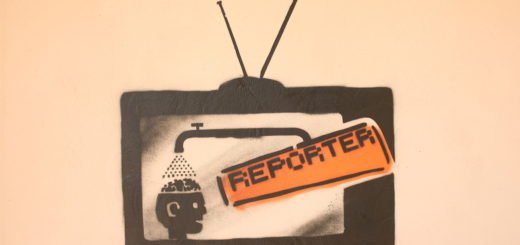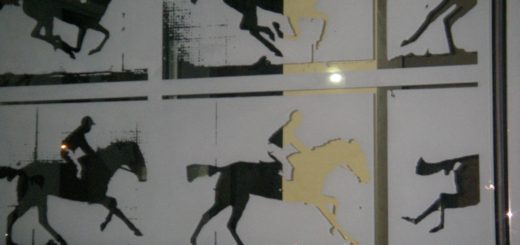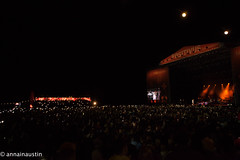Nashville Film Festival: Long Day’s Journey Into Night 3D
Nashville Film Festival coverage by Jason Sparks, Our Man In Nashville
I’m going to begin by saying that Bi Gan’s Long Day’s Journey Into Night 3D has, its title notwithstanding, nothing at all to do with the play by Eugene O’Neill that won the Tony for Best Play in 1956, and a Pulitzer Prize in 1957. Neither the married actors James and morphine-addicted Mary are present, nor are their sons Jamie and Edmund, nor Edmund’s tuberculosis. There’s no fog, no actors, no alcoholics.
I’ll continue with a synopsis of the film that, full disclosure, I found on its Wikipedia page: “The film chronicles the return of Luo Hongwu (Huang Jue) to Kaili, the hometown from which he fled many years before. Back for his father’s funeral, Luo recalls the death of an old friend, Wildcat, and searches for lost love Wan Qiwen (Tang Wei), who continues to haunt him.”
Does that sound incredibly straightforward? Of course it does. Does it sound particularly obtuse, difficult to interpret? Of course not. That said, it is a film all but impossible to understand, until the viewer throws one simple concept into the mix: dream logic.
Dreams tend to have their own logic: you’re in a mall that closed years ago or never existed in the first place, you’re hovering just off the ground as opposed to walking, and you’re headed to the food court to meet your dad, even though your dad died 19 years ago. None of it makes sense, none of it holds up to thought, but you, the dreamer, are operating like an improv comic, responding to it all with “yes, and,…”
Which is how, it turns out, one should approach Long Day. The first part of the film unfolds like a neo-noir, as Luo tries to reconstruct his past, as well as Wildcat’s past and, to a degree, his father’s past. The father, it seems, was in the habit of staring at a clock on the wall in his house. After his death, Luo’s mother removes the clock, revealing the book hidden behind it, and the picture tucked within the book. The book, we learn, ostensibly contains a spell for making a house rotate. The picture is of a young, enchanting woman, a phone number written on the back; Luo finally determines it’s the phone number for a women’s prison, at which the girl in the picture (now much older) is an inmate.
The picture and its subject is but one of several “mysteries” Luo is trying to solve. The main mystery it the riddle of Wan Qiwen; while it is rare for natives of Kaili to leave their hometown, Wan Qiwen may have done just that, and not necessarily of her own will. She may have been taken by a local gangster to settle a gambling debt. The same gangster may have also killed Wildcat, whose body was found in a mineshaft—the mine being connected to said gangster.
Most of the scenes in which Luo is trying to unpack all of this, were they (1) in black-and-white (2) performed by Caucasians, would be completely at home in any noir from the late forties. Luo is a lone wolf, doggedly seeking answers and monologizing to himself; most of the people he encounters are cagey and vague, giving him as little information as they can—despite which, Luo still finds ways to continue his investigation (much as Bogie or Alan Ladd would have done.)
The film continues in this manner until Luo, waiting for a karaoke bar to open (where the girls singing may have information about Wan Qiwen), decides to kill time by attending/falling asleep during a movie. The movie is called Long Day’s Journey Into Night, and, per the announcement on-screen, is in 3D (which also serves, of course, as a clue that the movie we’re watching, also called Long Day’s Journey Into Night, is about to enter its own 3D sequence.)
What follows is something that I, and likely everyone else who has seen this film, have been trying to unpack ever since. It’s a single, continuous, 59-minute-long take, and it’s all in 3D, and those are the only two details about the scene I can report with any degree of certainty. It begins with Luo in a mineshaft—the one Wildcat died in?—where a young boy has apparently been living on his own for years. The boy explains that he knows a way out, and will show Luo the way, if Luo can beat him at ping-pong. Luo beats him, and is taken, via motorcycle, to the opening of the mine, on a hillside overlooking the karaoke nightclub Luo was waiting to get into. After accessing the nightclub via zip-line—as you do—Luo divides his time between trying to speak to one of the karaoke singers and speaking to a young woman who, apparently, manages a video arcade on the nightclub’s second floor. Each interaction, and each trek through the nightclub—a repeated maze of staircases and stages—seems to bring Luo closer to answers about Wildcat, Wan Qiwen, and his father. Or not. It’s very difficult to say for sure.
This is not a linear film, not a film that spoon-feeds the viewer anything, and no, that’s not merely because it’s a film in another language; Chinese audiences found it baffling as well. On its initial release, the film made the equivalent of USD $41 million—no film released in China in 2018 had a better box-office—but the film disappeared from the charts after three weeks, largely due to word-of-mouth (and a hashtag which loosely translates to “didn’t understand Long Day’s Journey Into Night”, which trended in Twitterspheres other than my own.) It’s a challenging film, but it’s worth the challenge. Jue and Wei are both incredibly capable actors, fully believable in their roles, and, if nothing else, it’s a wonder to look at. Cinematographers Yao Hung-I, Dong Jinsong, and David Chizallet turn the city of Kaili into a gritty, shadow-laden maze worthy of Sam Spade’s San Francisco, and the karaoke nightclub-cum-dreamspace never fails to feel like a complete, if not wholly understandable, world. It’s worth seeing, even if you’re never clear what you’re seeing, because you will leave the theatre with a desire to comprehend what you’ve just seen.






















